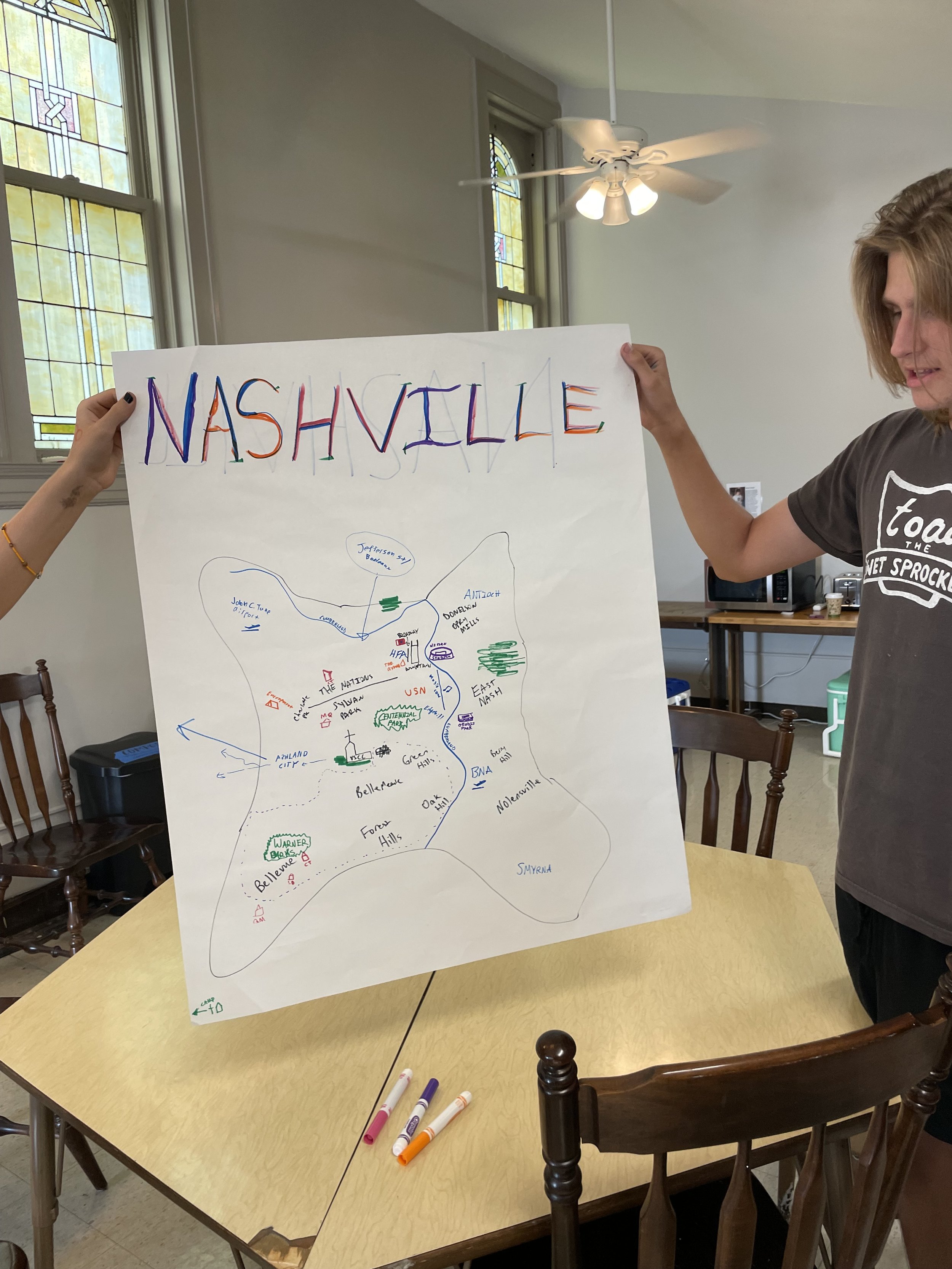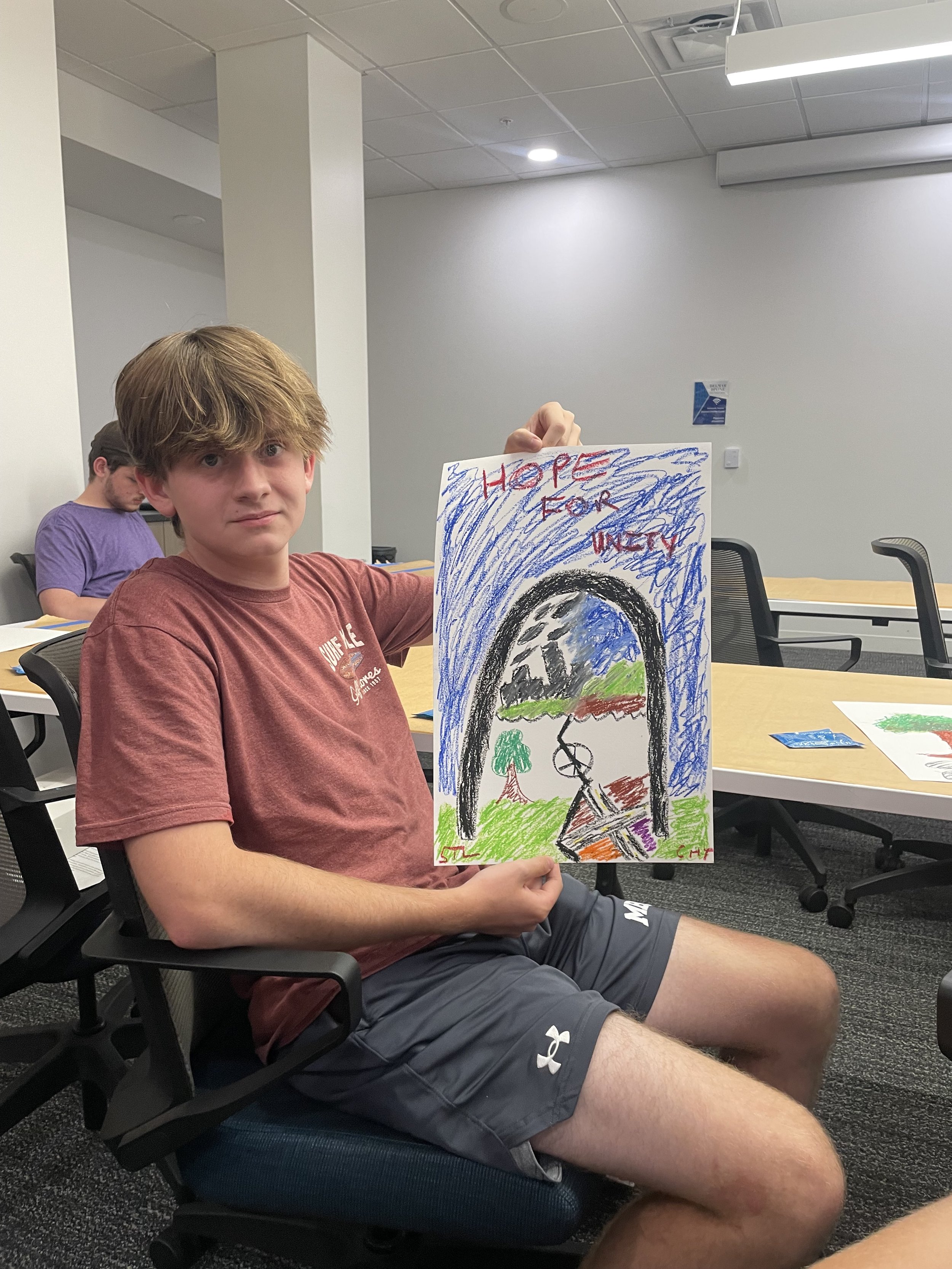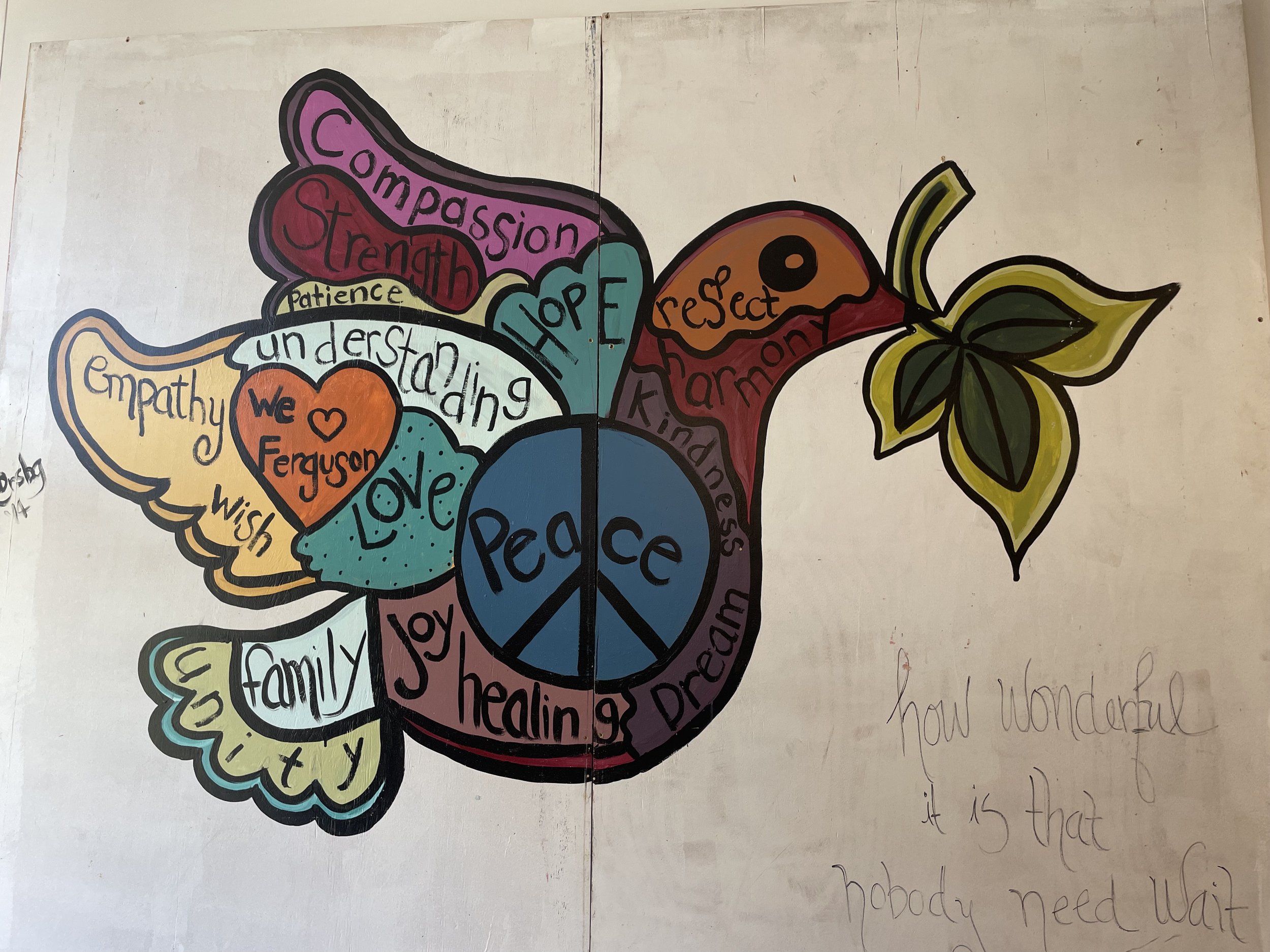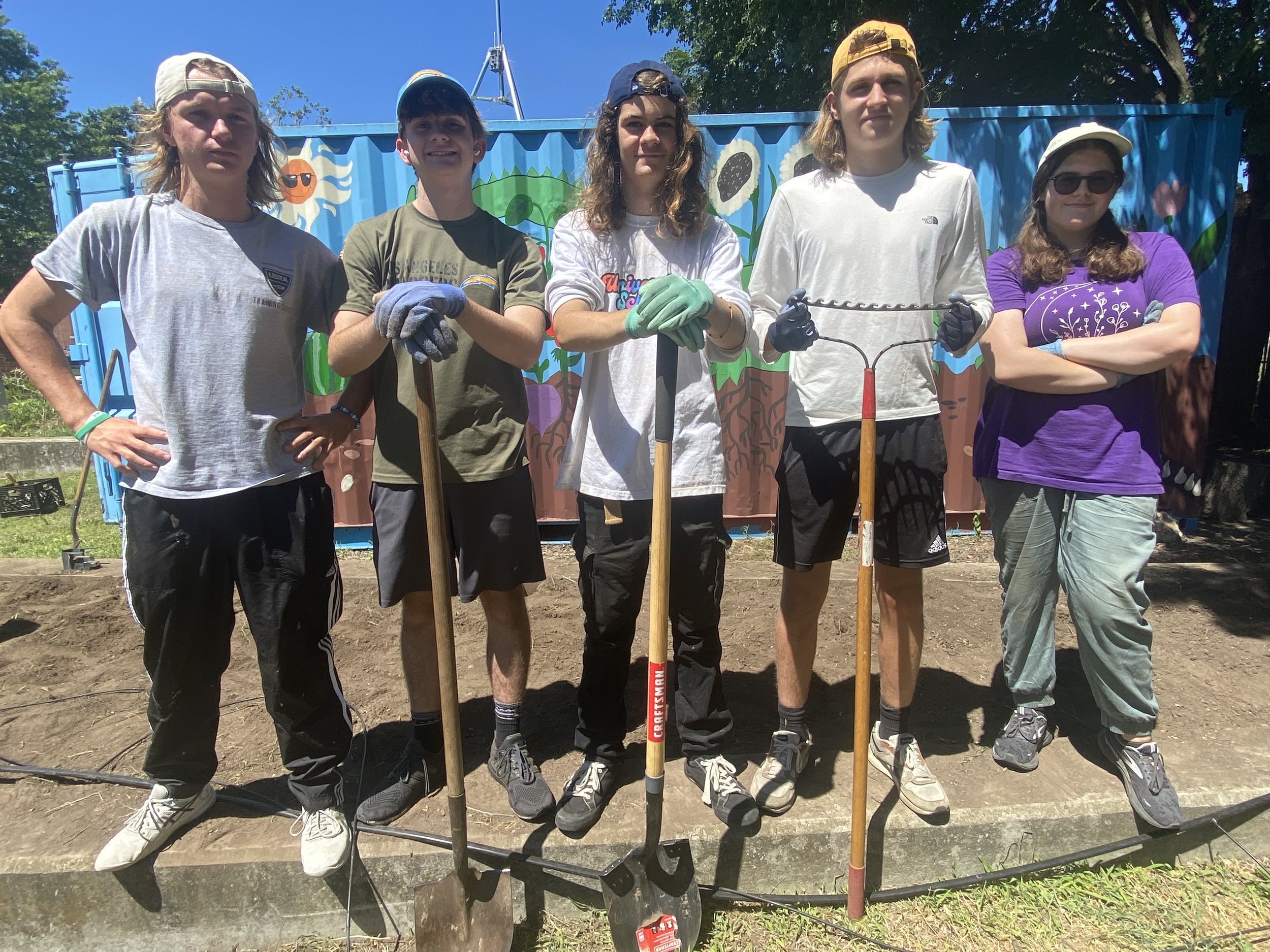





A few weeks ago, me and Jeff took the youth on a trip to St. Louis, Missouri to learn about racial reconciliation in the city. We went with our friends from Lindenwood Christian Church in Memphis, as well as some new friends from Harvard Avenue Christian Church in Tulsa, Oklahoma.
There were some familiar aspects to this trip: we slept in bunk beds, ate a lot of ham sandwiches and of course, played ultimate frisbee. But the landscape of St. Louis differed significantly from our trip last summer in Tucson.
We began our week learning about the Delmar Divide. This divide is a literal street, Delmar Boulevard, that shows a clear division between people based on their race and socioeconomic status. The wealthy, mostly white people live on one side of the boulevard. The people of color with less resources live on the other. As we drove along the boulevard, we quickly saw the historic mansions and lush green lawns turn into low-income housing and food deserts. Of course we see this contrast in Nashville, but to me, it doesn’t manifest in a single street.
We spent the week learning from several historically Black, Disciples of Christ churches that work to combat this inequitable divide. We visited non-profit organizations and community gardens working to do the same. We began to understand the ways in which zoning, redlining and gentrification can affect the livelihood and basic needs of our neighbors. We also began to see the ways in which churches and organizations have come together to address this issue from a collaborative approach. It really does take a village.
One of the most powerful activities from this trip involved drawing a map of our own city. I watched as Calin, Liam and Quinn drew their schools, our parks and yes, Vine Street! I also watched as they drew places or areas of town where they have seen homeless encampments or people sleeping outside. Upon reflection, we noticed that the further outside of downtown we went, the more low-income neighborhoods and stark racial divides appeared. The exercise was very telling: yes, we drew Centennial Park, but we also drew the shadow-side of the city.
It is often hard to know what to do in light of Nashville’s own visible or invisible divides. Our church is situated in a wealthy area of the city, with grocery stores, parks and schools all around us. By all accounts, we’re on the “good” side of the Delmar Divide. In light of that, how could we as a church take a good, honest look at our neighborhood and city and work to bring about systemic and local change? I see the ways in which Open Table, Room in the Inn, Safe Haven and many other organizations are tackling issues like homelessness, racism, and classism. How can we collaborate with them to bring about the kingdom of God, on earth as it is in heaven?
As the summer months grow hotter and the winter months grow colder, I wonder what we as Christians will do, whether it is advocacy down at the capitol or direct efforts around town, to eradicate these dangerous divides?
The youth will speak on Sunday, July 21st, about their experience in St. Louis. Join me in worship as we listen to the prophetic voices of young people who hope to bring light to the shadows of our city.

